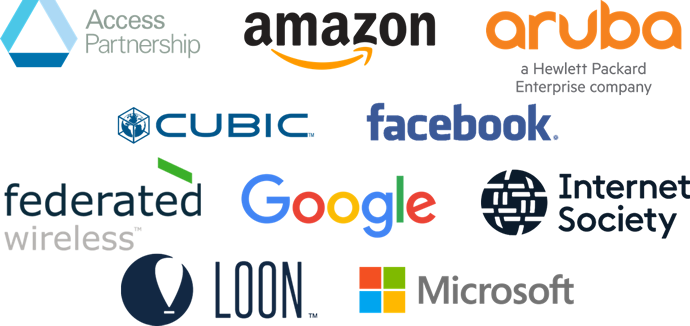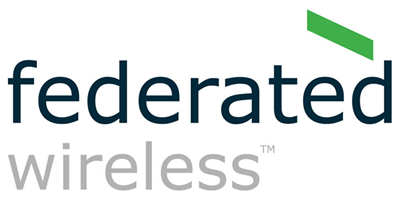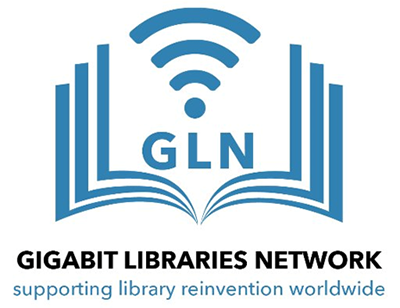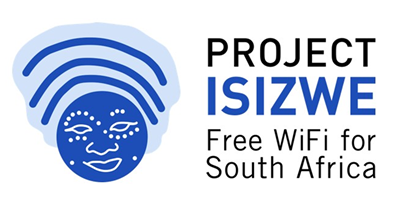|
Dynamic Spectrum Alliance Q1 2020 NewsletterKeeping you updated about our activities! Here we highlight our latest work and focus on areas where we are empowering the next wave of spectrum access. |
||||
|
Introduction from Martha Suárez Welcome to the first DSA newsletter of 2020! As I sit down to write the first newsletter of the year, I acknowledge it is an uncertain time for many of us, and my sincerest thoughts and best wishes are with everybody during this time. Thankfully, we can remain together during times of crises thanks to worldwide connectivity. In fact, this situation is showing the globe just how important broadband access is in keeping us informed, safe and our institutions moving. As a result, we are even more determined to reach our goals this year to progress dynamic spectrum access worldwide for everyone to benefit from staying connected. Our members have achieved some great breakthroughs in recent months, and the DSA is proud to have supported them and spectrum authorities globally in the movement towards more flexible and innovative spectrum management frameworks. We will continue, throughout this year, to advocate for a variety of different spectrum sharing technologies and new sharing opportunities in different frequency bands. You can expect to hear more from our advocacy actions in the 6 GHz band, mid-band spectrum (3.1 to 3.55 GHz, CBRS, C-Band), Ultra-High Frequencies (TVWS) and mmWaves. We will maintain our active support of the progression of all these innovations, as well as our engagement with regulators and multi-stakeholder organizations worldwide. With travel restrictions currently in place, my diary will consist of many more virtual meetings with regulators and industry leaders across the world, seeing more regulations signed and helping to connect more people globally! Having welcomed three new members to our alliance in January, we are thrilled to progress with them and look forward to growing even further. Like ourselves, our new members Crown Castle and Cubic stand for innovation and providing solutions for all to better their quality of life through effective deployment, protection and connections. We are also delighted to welcome Loon who, in response to the COVID-19 pandemic, are enabling universal 4G data coverage in Kenya. This will enable more people to work and learn from home whilst remaining safely informed during this time, and lay foundations for greater expansion in the future. Brilliant work! We are delighted to see the industry come together and commit to keeping everyone safe and connected: access to spectrum is now more important than ever. Many regulators have implemented special measures during this exceptional time; for example, in the USA more than 550 companies have signed the Federal Communications Commission’s (FCC) Keep Americans Connected Pledge, which will ensure citizens stay connected to broadband and communication services when it is needed the most. In South Africa, ICASA has enabled the use of TVWS to provide affordable internet services to rural and marginalised communities. We are looking forward to seeing more concrete examples of how spectrum can play a vital role during this time and how governing bodies are working to support its technologies. Another cause for celebration at start the year was the commercial deployment of CRBS becoming fully authorized in the US. As long-term advocates of CBRS implementation, the DSA is thrilled to see this milestone realized. In addition, the FCC also recently established competitive bidding procedures for the 105 auction in the 3.5 GHz band. The auction of Priority Access Licenses in the 3.55-3.65 GHz band will encourage increased investment and deployment in Mid-band Spectrum for 5G. In January, I visited Chile to host a TVWS workshop and promote the efficient use of spectrum there. I met with SUBTEL to discuss TVWS, the technology and the possibilities for a new regulatory framework. Such regional digital transformations are revolutionary to each nations’ citizens, and we are pleased to be able to discuss the potential for a better future with leading organizations to help drive it into fruition. Throughout February, we took the opportunity to travel to Europe despite the unfortunate cancellation of Mobile World Congress to meet with a variety of leading regulators and technological organizations. Meeting with ANFR in France and Ofcom in London, we were able to exchange perspectives as to the future of spectrum sharing and the implementation of an automated dynamic access approach. This year, we have been actively participating in Ofcom consultations and have already filed on three of them. We would like to take this opportunity to congratulate Ofcom on their proposal to improve spectrum access for Wi-Fi, opening up part of the 6 GHz band for low power indoor-only devices and very low power indoor/outdoor devices. This is a significant step in the right direction to address the UK’s growing demand for wireless broadband and, in future, we hope to see license exempt access allowed across the entire 6 GHz band. Last week, I virtually participated in the Nigerian Communication Commission TVWS workshop and we are delighted to see that the Nigerian government has published its new National Broadband Plan 2020-2025, with TVWS regulation standing as an integral part of it. Earlier in the month, TeleSemana invited me to be part of their #BCN2020 Latam Summit, hosting a collaborative webinar about the benefits of dynamic spectrum sharing for worldwide connectivity. This week, I will also take part in Senza Fili’s Sparring Partners webinar led by their President, Monica Paolini. Jessica McCarthy of Federated Wireless will also be joining on behalf of the DSA, contributing to our discussion into the benefits of dynamic spectrum access technology. Register here to watch the debate live or catch up on YouTube! I would also like to take this opportunity to recognize our female DSA members and their outstanding actions in telecoms. This year, I was able to celebrate International Women’s Day as the first female President of the DSA and spoke in our latest blog post about the importance of gender equality in telecommunications for the progression of our industry and society. The DSA is built on collaboration, believing that synergy is key to facilitate a global movement – and this is no exception. Finally, as we look ahead to making further progress this year, I would like to say thank you for your continued support and commitment towards the goals we share. While it is a difficult time for us all, I am hopeful that this year will bring great things for the growth of spectrum sharing, and am thankful for the dedication we have, as an alliance, to improving connectivity among nations at a time when we most need it. We hope to keep working together and stay virtually connected – in the meantime, please stay safe and take care.
President of the DSA Martha Suarez |
||||
|
DSA 2020 Global Summit
As we plan ahead to the 8th annual Global Summit, it is our top priority to consider the health and wellbeing of all our attendees during the time of the worldwide COVID-19 pandemic. We are monitoring the situation closely and will be keeping everyone informed if there are any changes. Visit our website for more information, updates as they happen and for the full agenda! SPONSORS
MEDIA PARTNERS
|
||||
|
Upcoming
events
Internet of Things World |
||||
|
Sparring Partners Webinar
Join DSA President Martha Suárez, Jennifer McCarthy, Federated Wireless, and Monica Paolini, Senza Fili, on how spectrum sharing increases the efficiency in spectrum use and makes spectrum more accessible to new users. Answering questions including:
All this and more during our video debate, which as the previous ones will be unscripted, and open to real-time participation from the audience through a chat line, for questions and comments. Register here to join! |
||||
|
DSA in the News US frees 3.5 GHz for 5G in dynamic spectrum sharing plan Dynamic Spectrum Alliance celebrates as CBRS commercialization becomes a reality Dynamic Spectrum Alliance to lead worldwide dynamic spectrum sharing collaboration at 2020 Global Summit |
||||
|
Regulatory Affairs Work Group (RAWG) Update As a cross-industry organization, the Dynamic Spectrum Alliance works to engage with regulators and government officials to promote the adoption of legal and regulatory frameworks that facilitate dynamic access to radio spectrum. The Regulatory Affairs Work Group continues to develop policy positions for ratification by the Dynamic Spectrum Alliance, draft documents for submission to regulatory agencies and develop high-level positions on critical issues related to dynamic spectrum sharing. Recent filings include:
Any Dynamic Spectrum Alliance member can participate in the Regulatory Affairs Work Group, so if you are interested in this area then please contact admin@dynamicspectrumalliance.org. |
||||
|
Member/Partner Updates In this section, we share updates and news from DSA members around the world, if you have an update that you’d like to be included in the next newsletter, please email dsa@proactive-pr.com. |
||||
|
Broadcom Announces World’s First Wi-Fi 6E Chip for Mobile Devices In February 2020, Broadcom Inc. announced the availability of the world’s first Wi-Fi 6E client device, the BCM4389. This closely follows Broadcom’s launch of a number of WiFi 6E access point solutions at CES 2020. Wi-Fi 6E extends the Wi-Fi 6 standard to support the soon-to-be-operational 6 GHz band with wider 160 MHz channel bandwidths that double Wi-Fi speeds and cut latency in half compared to Wi-Fi 5. The BCM4389 delivers over 2 Gbps of real-world speeds and up to five times better battery utilization, making it an ideal solution for flagship smartphones and future AR/VR devices. Wi-Fi 6E builds on the rich feature set of Wi-Fi 6, which includes improved performance in crowded environments, advanced roaming capabilities and increased security. This enhancement of Wi-Fi 6 uses new spectrum in the 6 GHz band to deliver multi-gigabit speeds while avoiding congestion with legacy devices. The BCM4389 expands on the accelerated deployment of Wi-Fi 6, delivering a steady, swift and secure consumer experience in tandem with over 150 million smartphones already in the market. With the additional innovations of Wi-Fi 6E, it unlocks high-speed bi-directional video applications and augmented reality. For more on Wi-Fi 6E and 6 GHz Wi-Fi, read Broadcom blog post here.
The BCM4389 will benefit from a full ecosystem of Wi-Fi 6E products, including home routers, residential gateways, enterprise access points, and AR/VR devices. The new 6 GHz spectrum band is expected to be operational in the United States in 2020, and a wide range of 6 GHz enabled devices will be available at launch. |
||||
|
Following the successful launch of commercial services in the CBRS band last year, in February Federated Wireless announced Connectivity-as-a-Service – a new type of end-to-end managed service that enables enterprises to buy and deploy private 4G and 5G networks with a single click through the Amazon Web Services and Microsoft Azure Marketplaces. Connectivity-as-a-Service represents a simple way for businesses to buy and deploy private wireless the same way that they buy, deploy and manage their IT infrastructure today – using cloud marketplaces. The best part about this new CBRS-enabled service is that enterprises can benefit from accelerated private wireless network deployment with high-speed 4G/5G connectivity and strong security at minimum risk and capital expenditure. We take care of the installation, operation and management, delivering high performance, reliable five 9’s connectivity. No more complexity, no large number of components and vendors, no complicated integration processes with other networks and no big outlay for hardware and other equipment. Through the Amazon Web Service (AWS) Marketplace, managed connectivity can be purchased with a single click, or seamlessly integrated with the full range of IoT industrial automation, critical communications and security applications that AWS offers. And, through the Microsoft Azure Marketplace (coming soon), our connectivity service can be combined with a wide range of logistics, communications and security applications for manufacturing environments, again through a single click. Today’s Enterprise customers are quite familiar with cloud marketplaces and can now directly leverage our extensive partner program and application ecosystem for end-to-end managed service integration. |
||||
|
Public Libraries Innovate in Open Spectrum Use Gigabit Libraries Networks (GLN) reports continued growth of community scale public wireless systems to expand access/inclusion and increase resilience. In the U.S., some 80 million people rely on libraries to access the internet as either their sole source or as an additional place to connect in comfortable safe spaces. However, these people all must be at or just beside one of 16,000+ facilities. Public libraries represent the sole source of no-fee access in over two thirds of all communities in the country. For past 5 years, GLN has received multiple sponsorships and grants from private, non-profit and government sources to explore how public libraries might use TV Whitespace/WiFi to deploy small scale WWANS to extend access to an essential public ICT resource. Successful state pilot projects have been set up in Maine, Pennsylvania, Georgia, Nebraska, Michigan, South Dakota, Kansas, New Mexico & Colorado. Systems vary in accord with local needs: assuring access to e-gov services for all; supporting local economic recovery plans; enabling students to do homework. Libraries have the freedom and responsibility to address the widest range of community priorities. A pervasive secondary use involves network design to increase community resilience against disaster where libraries and other anchor institutions play the default role of second responders. A new federal grant supports development of Community SecondNets These simple networks can be both extremely valuable to communities in providing basic universal internet access as well as seed projects for wider adoption of open spectrum technologies. "Who better and more trusted than the world's 405,000 libraries, as intermediate end points in telecom infrastructure buildout, to act as test lab and access point in communities everywhere. The impact of this in America and the rest of the world is incalculable!” H. Nwana, fmr.Executive Director, DSA and fmr. head of spectrum at Ofcom. Gigabit Libraries Network will also be presenting at the upcoming DSA Global Summit in June. Don Means, Director |
||||
In October, Microsoft Airband reaffirmed its commitment to global connectivity at the Devex Conference on International Finance. Shelley McKinley, Vice President of Technology and Corporate Responsibility (TCR), was joined on stage by Airband partner Bluetown and representatives from the Millennium Challenge Corporation, the Overseas Private Investment Corporation and the Inter-American Development Bank. She announced an ambitious goal of extending high-speed internet access to at least 40 million unserved people around the globe by July 2022. Working through local partners, Microsoft focuses its new efforts on areas with significant unserved populations, initially Latin America and Sub-Saharan Africa, that also have a regulatory interest in solving connectivity issues. In addition, Microsoft will focus on engagement with development finance institutions to support scale opportunities for local partners. Extending internet access to 40 million people around the world in the span of three years is a big task – but it’s informed by Microsoft’s ongoing work in connectivity, experience with partners and work with governments and regulators. Read Shelley’s blog post about the announcement and Microsoft’s work to learn more. Within the United States, Microsoft Airband recently expanded its existing Airband partnership with Watch Communications to include the Commonwealth of Kentucky. Watch Communications is a rural internet service providing broadband services using a mixture of fiber and fixed wireless technologies, including TV white spaces, to customers in Ohio, Illinois, Indiana and now Kentucky. Currently, Watch is providing network design and will deploy IoT solutions for the Wabash Heartland Innovation Network (WHIN) in north-central Indiana. In addition, Watch is pursuing partnerships with organizations and universities in its footprint, like the University of Illinois Urbana-Champaign to demonstrate fixed wireless solutions, including TV white space technology. Finally, Microsoft Airband has been working on an interesting project in Anamosa, Iowa, USA, with Airband partners, NextLink and American Tower Company, which is demonstrating how high VHF and UHF TV white spaces can be used to deliver cloud-connected narrowband IoT solutions to farmers. Microsoft has developed a triple-band IoT radio utilizing the LoRaWAN standard and which can tune to high VHF, UHF, and the 900 MHz ISM bands. This radio can be operated at low power and deliver connectivity over large geographic areas. This project also features Microsoft’s Farmbeats cloud platform, which is leveraging Azure machine learning capabilities to help farmers be more productive, more profitable, and better stewards for the environment. Pictured above is a farmer in Anamosa inspecting his sensor box. |
||||
Project Isizwe has launched the Give-a-Gig foundation to provide free Wi-Fi across South Africa. This movement is essential to improving citizen’s access to education, jobs and social inclusion in the region, introducing them to the digital economy. Although Africa has good internet coverage already, the cost of data can rise significantly depending on location and personal credit – data for an individual who is not deemed creditworthy can be 100 times more expensive than it costs for someone who is. Such a divisive inequality barrier is a marginalising force against those on lower income, leaving them with a minimal variety of choice in their data options and often depriving them of the opportunities that come with an online presence. Project Isizwe is saving South Africans in low income communities more than R60 million a year in data costs via donations to the cause. By donating just $0.70, you can buy one GB of data for families across the country who would otherwise be unable to afford the higher charges. For more information, listen to our podcast or visit our website and donate to join our cause today. |
||||
Saankhya Labs has recently received certification from the Federal Communications Commission (FCC) for their cutting-edge TV White Space (TVWS) technology - the industry’s first WIFAR compliant Ultra-High Frequency (UHF) broadband radio solution. Its UHF based Fixed Wireless Base Station and Client Radio products provide high speed broadband connectivity to underserved and unconnected areas and can be used for communication during natural disasters with applications in defence communication, surveillance and the Internet of Things (IoT). The MEGHDOOT Base Station Radio supports point-to-point and point-to-multipoint modes of operation for the highest spectral efficiency on the market. With the capability for remote deployment, the solution can help to connect millions of people in rural areas, facilitating the introduction of cost-effective, high-speed broadband. Saankhya has supplied TVWS products for trials to customers in USA, UK, South Africa, South Korea, Zimbabwe, New Zealand and Japan. Now with FCC certification in place, Saankhya Labs solution is ready for roll out the solution globally to provide a more competitive market. This, we hope, will instigate a movement towards affordable connectivity for all. Read the full press release here. |
||||
|
If you would like more information, or if your company or organization is interested in joining the Dynamic Spectrum Alliance, then please email admin@dynamicspectrumalliance.org.
Follow
Us: |







 Key features of BCM4389 include:
Key features of BCM4389 include: 



